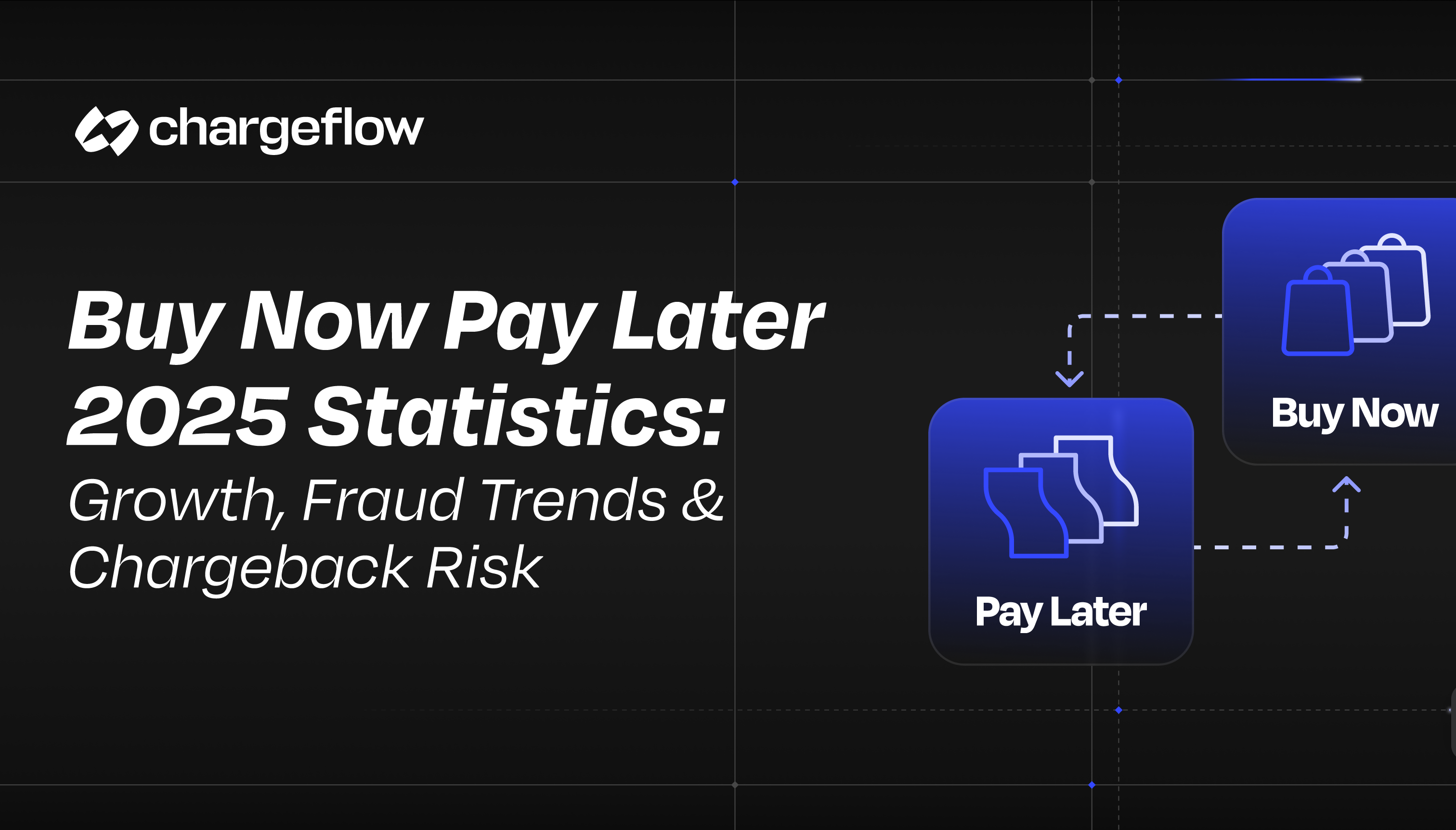The Ultimate Guide to Removing PayPal Account Limitations For Merchants

Chargebacks?
No longer your problem.
Recover 4x more chargebacks and prevent up to 90% of incoming ones, powered by AI and a global network of 15,000 merchants.
Learn how to remove PayPal account limitations as a merchant and regain full access to your funds with this comprehensive guide. Get started now!
If you run an online store, you’ll know the importance of having a reliable payment account for accepting customer orders. PayPal is one of the leading payment solutions available today, but many merchants encounter limits that can hamper the smooth running of their stores.
This guide will provide you with expert advice on how to successfully navigate any potential limitations and get back up and running quickly – helping to ensure your customers experience minimal delays when ordering from your site.
With our step-by-step approach, you’ll be able to easily remove PayPal account limitations and keep your store running at its best!
Understanding PayPal Account Limitations
Types of limitations
PayPal may impose different types of limitations on its users' accounts depending on various factors, such as the account's activity, transaction volume, history, and compliance with PayPal's policies. The types of limitations may include:
- Account Access Limitations: PayPal may restrict user's access to their accounts, preventing them from logging in, withdrawing or transferring funds, or making payments.
- Sending/Receiving Limitations: PayPal may limit users' ability to send or receive funds through their accounts.
- Payment Holds: PayPal may place a hold on users' payments, preventing them from accessing the funds for a certain period of time.
- Account Restrictions: PayPal may restrict certain account features or prevent users from performing certain activities, such as buying or selling on PayPal, adding or withdrawing funds, or linking bank accounts or credit cards.
- Account Suspension: PayPal may temporarily or permanently suspend users' accounts if they violate PayPal's policies or engage in fraudulent or illegal activities.
Reasons for limitations
PayPal imposes account limitations to protect its users, prevent fraud, and comply with regulatory requirements. Some common reasons for limitations include:
- Suspicious activity or unauthorized access to the account.
- High-risk transactions, such as large or unusual payments, or transactions involving high-risk industries or countries.
- Violation of PayPal's policies, such as selling prohibited items, using fake or misleading information, or engaging in fraudulent activities.
- Negative balance or outstanding disputes or claims.
- Failure to provide required documentation or information, such as proof of identity or address.
Effects of limitations on merchants
PayPal account limitations can have a significant impact on merchants, especially those who rely on PayPal for their business transactions. Depending on the type and duration of the limitation, merchants may experience the following effects:
- Disruption of business operations: Limitations on sending or receiving funds can prevent merchants from fulfilling orders or paying suppliers, which can lead to delays or cancellations and damage to their reputation.
- Cash flow problems: Payment holds or restrictions on accessing funds can create cash flow problems for merchants, especially if they rely on PayPal as their primary payment method.
- Additional costs: Merchants may incur additional costs, such as chargeback fees, refund fees, or transaction fees, as a result of disputes or claims.
- Loss of customers: Account suspensions or restrictions can result in loss of customers and revenue, as merchants may be unable to process payments or fulfill orders.
- Difficulty in resolving issues: Merchants may face challenges in resolving issues with PayPal, such as long wait times, unclear communication, or lack of transparency in the decision-making process.
How to Avoid Account Limitations?
To avoid PayPal account limitations, users should follow these best practices:
Comply with PayPal policies and guidelines
Users should thoroughly read and understand PayPal's policies and guidelines, such as the Acceptable Use Policy and User Agreement, and ensure that their accounts and transactions comply with these rules. Users should also keep themselves informed of any updates or changes to these policies and adjust their practices accordingly.
Maintain good business practices
Users should maintain good business practices, such as providing accurate descriptions of goods or services, delivering orders promptly and as described, and responding to customer inquiries or disputes in a timely and professional manner. Users should also avoid engaging in high-risk transactions or industries that may trigger PayPal's risk management systems.
Provide accurate information
Users should provide accurate and up-to-date information, such as their legal name, address, and contact details, when creating or updating their PayPal account. Users should also ensure that their bank account or credit card information is accurate and matches their PayPal account information. Users should promptly update their account information if there are any changes or discrepancies.
Monitor account activity
Users should regularly monitor their PayPal account activity, such as incoming and outgoing payments, refunds, and disputes, to identify and resolve any issues promptly. Users should also review their account history to ensure that all transactions are legitimate and authorized.
Respond to PayPal requests promptly
If PayPal requests additional information or documentation, users should respond promptly and provide the requested information. Users should also cooperate with PayPal's investigations or reviews and provide any relevant information or evidence to support their case.
By following these best practices, users can minimize the risk of having their PayPal account limited and ensure that they can continue to use PayPal for their business or personal transactions.
How to Remove Account Limitations?
Verify your account information
Users should ensure that their account information, such as name, address, and contact details, is accurate and up-to-date. Users may also need to provide additional documentation or information, such as proof of identity or address, to verify their account.
Resolve outstanding issues
Users should resolve any outstanding issues, such as disputes or claims, in a timely and satisfactory manner. Users should also ensure that their account balance is not negative and that they have not violated any PayPal policies or guidelines.
Contact PayPal customer support
Users can contact PayPal customer support by phone, email, or chat to inquire about the reason for the limitation and how to remove it. PayPal customer support may ask users to provide additional information or documentation to verify their account and resolve any issues.
Appeal the limitation
If the user believes that the limitation was imposed in error or that their account has been mistakenly identified as high-risk, they can appeal the limitation by submitting a written request to PayPal's appeals department. The request should provide a clear explanation of why the limitation should be lifted and any supporting evidence or documentation.
It is important to note that the process of removing a PayPal account limitation may take time and may require patience and persistence. Users should follow up with PayPal regularly and provide any additional information or documentation requested promptly. By taking these steps, users can increase their chances of having their account limitations lifted and resume normal account activity.
Tips for Preventing Future Limitations
Regularly update account information
Users should regularly review and update their PayPal account information, such as name, address, and contact details, to ensure that it is accurate and up-to-date. Users should also ensure that their bank account or credit card information is accurate and matches their PayPal account information.
Be transparent with PayPal
Users should be transparent with PayPal about their business or personal transactions and provide accurate descriptions of goods or services. Users should also avoid engaging in high-risk transactions or industries that may trigger PayPal's risk management systems. If there are any changes or discrepancies in their account activity, users should promptly report them to PayPal.
Respond promptly to inquiries from PayPal
If PayPal requests additional information or documentation, users should respond promptly and provide the requested information. Users should also cooperate with PayPal's investigations or reviews and provide any relevant information or evidence to support their case. Users should also monitor their account activity regularly and report any unauthorized or suspicious transactions to PayPal.
Maintain good business practices
Users should maintain good business practices, such as delivering orders promptly and as described, providing excellent customer service, and responding to customer inquiries or disputes in a timely and professional manner. Users should also keep their account balance positive and avoid disputes or claims whenever possible.
Final Thoughts
We hope this guide has helped you understand what PayPal account limitations are and how to avoid or remove them. By following the tips in this article, you can help prevent future limitations on your account.
If you need further assistance, our team of experts would be happy to help you create a stellar payment processing solution for your business. Have you ever had a PayPal account limitation? What tip from this guide do you think will be most helpful in preventing future limitations?

Chargebacks?
No longer your problem.
Recover 4x more chargebacks and prevent up to 90% of incoming ones, powered by AI and a global network of 15,000 merchants.






























.png)








